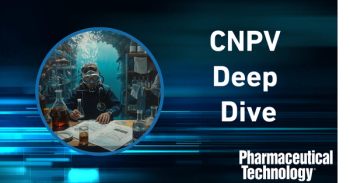
- Pharmaceutical Technology-11-02-2009
- Volume 33
- Issue 11
Changes for Better or Worse
New tests solve one issue, but cheaper plastic and new stoppers cause problems.
Off the charts
"We had an endotoxin control chart that showed a trend," recounted our GMP Agent-in-Place. "There was one result out of limits, but when we checked the data, we realized that there were 20 consecutive batches that were higher than the normal "non-detectable" results. This was clearly a time-based phenomenon, so we did the obvious checks for time-related changes.
"The only item we found we discounted, as it was an excipient lot number change that is used in 1 part per million. The quantity used was why we discounted it, as the 6-log dilution alone should result in no detectable endotoxin. In the end, the suspect lot was tested. It took some doing as we had to run numerous dilutions to get it into a readable range, and found it to be over 2 x 106. Therefore, even with the 6-log dilution, there was plenty of endotoxin left to make the test read high. Endotoxin hadn't been a release test for that excipient, but it was after that," our agent reported.
Holey water
"We had a lyophilized product that is typically self-administered and needed reconstitution before use," explained our GMP Agent-in-Place. "In the package, we included a double-ended transfer needle for the patient to use to transfer the sterile water diluent to the product. The transfer needle is packed in a plastic pouch that is sterilized. When we found holes in the plastic pouch on some samples from the contract sterilizer, we initiated an investigation. We found holes in pouches in retain samples of the product, which immediately led to a recall. This product is sold in more than 30 countries and we recalled all in-date batches to replace the transfer needle. It turned out that someone had made a change to the plastic years ago to make it less expensive, but our recall cost hundreds of times more than the cost savings totaled."
Hazy weather ahead
"We had a sterile liquid-protein product that we made for more than 20 years with no problems and no formulation change," noted our GMP Agent-in-Place. "The annual inspection of retain samples also showed no problems, until recently. For some reason, on a few batches, we found a slight sediment in the bottom of the bottle. In fact, the sediment could not be seen until an undisturbed bottle was carefully picked up and tipped over, whereupon a haze could be seen drifting along the bottom. Our investigation gave a possible cause of a small change in the stopper that roughly correlated with the appearance of the haze. When we investigated the material, the quantities were nearly too small to measure, and were evaluated as medically inert, although we did correct the stopper problem."
We're green (with envy)
"We ship and receive products from around the world," bragged our GMP Agent-in-Place. "One refrigerated product came from Europe in a robust, double-pallet-sized package that was stacked on a full sheet of plywood and covered by another to protect the product and the 4 in of expanded polystyrene insulation that was used. The plywood was very high quality (eight layers and about 5/8 in thick.) Instead of recycling it, one employee took it home all year claiming that he was insulating his barn with it. We got one to two such shipments a week; that must have been a huge barn."
Pharmaceutical Technology's monthly "Agent-in-Place" column distills true-life cautionary tales from the secret files of Control, a senior compliance officer. If you have a story of clueless operators, oblivious management, inopportune lapses of judgment, or Murphy's Law in action, please send it to Control at
Articles in this issue
about 16 years ago
Sharing Supply-Chain Securityabout 16 years ago
Facing Realityabout 16 years ago
Position Paper: Are We Abandoning IQ and OQ?about 16 years ago
Safety versus Speed in Drug Developmentabout 16 years ago
Insider Solutions: A New Direction for USP?about 16 years ago
DIY Healthcare Reformabout 16 years ago
Are We Abandoning IQ and OQ?about 16 years ago
Advancing Chiral Chemistry in API Synthesisabout 16 years ago
Whatever Happened to Classical Chemistry?about 16 years ago
A Robust, Automated Karl Fischer Titration SystemNewsletter
Get the essential updates shaping the future of pharma manufacturing and compliance—subscribe today to Pharmaceutical Technology and never miss a breakthrough.




